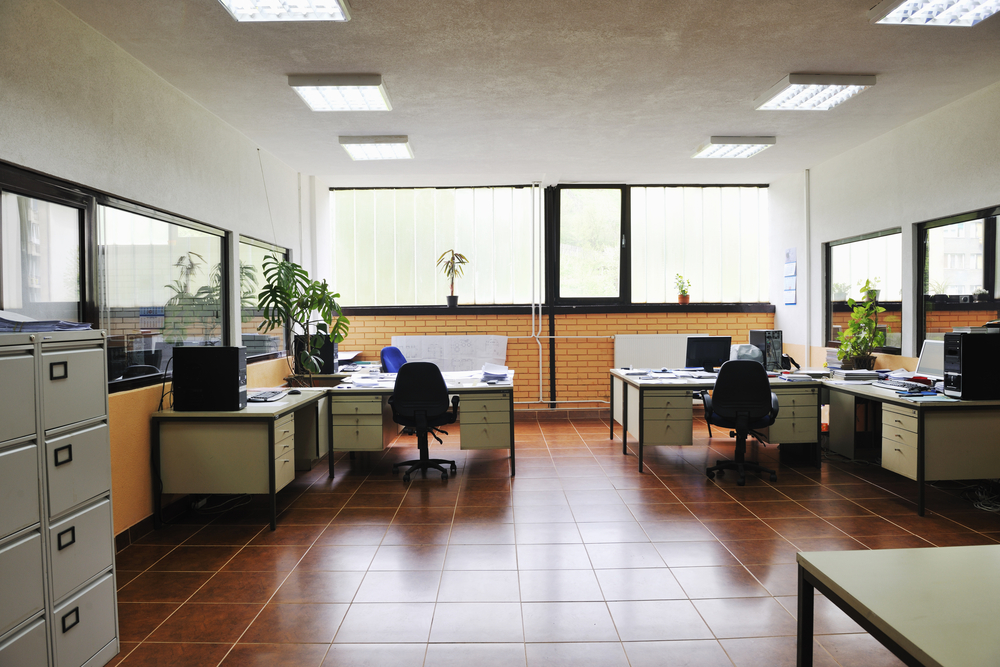Newsletter
You may be surprised to find out that your HVAC system eats up almost 40% of your building’s total energy consumption. That huge chunk of energy that can significantly increase the cost of running your building.
With the increasing popularity of green buildings, many property managers are looking to trim down HVAC energy usage and cut down HVAC costs. However, the balance between energy saving and health is delicate. How can we optimize HVAC efficiency without sacrificing the health, comfort, and well-being of building occupants? This is where air quality monitoring comes into play.

While researchers have published many articles about the positive effects of air quality improvements on worker productivity, fewer people know about the benefits of air quality monitoring relating to your HVAC system. We’re going to break down some of the ways investing in air quality monitors can cut down your HVAC cost and energy usage in this article.
Collect Air Quality Data to Verify HVAC Performance
Air quality monitoring can help building management teams prevent system failures and provide preventative maintenance.
It’s much more cost-effective to take action early, before your HVAC system encounters damage. Preventative maintenance is critical in not only reducing the costs associated with system failure and substantial repairs but also keeping your system running smoothly without untimely interruption.
Air quality monitoring can inform you about the status of your HVAC system, much like taking a pulse. Projects that receive a RESET Certification, such as the Canadian Embassy in Beijing, feature air quality monitors on every floor. Should one floor have significantly worse air quality than the others, you'll know that the HVAC system needs repairs.
Four of Microsoft’s China offices adopted a similar practice. Researchers installed PM2.5 monitors on every floor then calculated the expected time of air purification and compared these figures to real purification times.
When real purification time (PT) was much higher than expected PT, the researchers knew that the HVAC system was working improperly on that floor. The building management team then inspected the HVAC system and discovered that the filters were dirty, causing the HVAC system to run inefficiently and consume too much energy. With the data from PM2.5 sensors, they replaced the filters and boosted the efficiency of the HVAC system and cut down their HVAC cost.
Use Air Quality Data to Optimize HVAC Design and Runtime
Furthermore, you can use air quality data from your building to optimize the design and runtime of your HVAC system.
With data from an air quality monitor, building managers can examine existing HVAC protocols to identify spots for improvement. Long-term aggregate data reveals IAQ trends, which you can use to determine when to run the HVAC system.
Air quality data can also directly automate the HVAC system. In a study published in the Environmental Engineering and Management Journal, researchers designed a test room where TVOC sensors, alongside CO₂ sensors, automatically controlled when the HVAC system would run. At the end of the experiment, researchers discovered that the test room consumed 15% less energy by trimming down unnecessary run time.
This experiment is an example of demand controlled ventilation (DCV), which uses CO₂ readings to control ventilation rate. A survey on Norwegian schools also found that using CO2 sensors for DCV (as opposed to constant air volume ventilation) reduced energy consumption by 62%.
While leveraging CO₂ data for demand controlled ventilation has become a popular practice in the industry, we also see great value in monitoring TVOC and particulate matter and incorporate these data for your HVAC automation to help you cut unnecessary energy usage and maintain healthy IAQ.
For example, in situations where outdoor particle pollution and indoor carbon dioxide are both elevated, simply increasing ventilation without proper filtration and purification will suck more particulate matter into the building. Similarly, when TVOC levels are high and indoor carbon dioxide levels are low, DCV systems based around carbon dioxide will not properly ventilate the building and clear the toxins in the air. Including particulate matter and TVOC monitoring into your network can ensure that the ventilation rate is not only efficient but also promotes occupant health.
Investing in an air quality monitoring system for your building is a great start to help you save on cost and energy through your HVAC system. Additionally, it helps you put the health and wellbeing of your occupants in the first place and boost office productivity and profitability in the long run.
If you are thinking about implementing air quality monitoring in your building, talk to our team of experts and let us know!






.png?width=200&height=148&name=Menu%20C%20(2).png)

.png?width=307&height=228&name=Menu%20-%20D%20(1).png)
.png)




